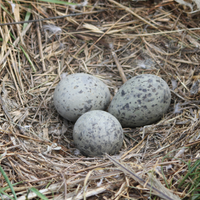Animal acoustics

Some Bats Buzz Like Hornets to Deter Predators
Natalia Mesa, PhD | May 9, 2022 | 2 min read
The behavior is the first example of a mammal mimicking a more-dangerous species.

Fruit Bats Echolocate During the Day Despite Having Great Vision
Natalia Mesa, PhD | Apr 20, 2022 | 4 min read
Contrary to what researchers had assumed, Egyptian fruit bats don’t rely solely on sight to orient themselves as they drink and forage for food in daylight.

Fear Could Help Explain the Behavior of Animals in the Ocean
Catherine Offord | Jan 4, 2022 | 2 min read
Avoidance of predation is a driving force behind the daily movements of marine creatures across the food web, a study concludes.

Infographic: Animal Embryos Coopt Sound to Survive and Thrive
Amanda Heidt | Nov 1, 2021 | 1 min read
Across the tree of life, animals use sound and other vibrations to glean valuable sensory information about their environments even before they are born.

Embryonic Eavesdropping: How Animals Hear and Respond to Sound
Amanda Heidt | Nov 1, 2021 | 10+ min read
Recent findings buck the traditional idea that embryos are passive agents and instead suggest that by tuning into vibrations, organisms can better prepare to enter the outside world.

Slideshow: How Animal Embryos Eavesdrop on the Outside World
Amanda Heidt | Nov 1, 2021 | 4 min read
Watch and listen to reptiles, amphibians, insects, and birds respond to sound from inside their eggs.

When Pursuing Prey, Bats Tune Out the World
Lisa Winter | May 1, 2021 | 2 min read
As they close in for the kill, the flying mammals use quieter echolocation to focus on the chase.

Pandemic Shutdown Altered Bay Area Birdsongs
Ruth Williams | Sep 24, 2020 | 4 min read
As shelter-in-place orders quieted the city of San Francisco, its sparrow population developed softer, sexier songs.

Unhatched Gulls Shake Their Shells to Warn Siblings of Danger
Nicoletta Lanese | Jul 23, 2019 | 2 min read
The unborn chicks translate auditory alarms from adult birds into quaking vibrations.

Image of the Day: Vocal Tracks
Chia-Yi Hou | Jun 25, 2019 | 1 min read
Hear seals imitating human sounds and melodies.

Peter Tyack: Marine Mammal Communications
Anna Azvolinsky | Jul 1, 2016 | 9 min read
The University of St. Andrews behavioral ecologist studies the social structures and behaviors of whales and dolphins, recording and analyzing their acoustic communications.
